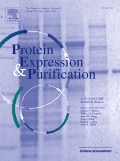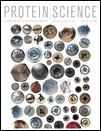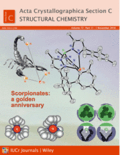
Journal of Structural Biology-X
Scope & Guideline
Elevating Knowledge in the World of Biochemistry and Beyond
Introduction
Aims and Scopes
- Structural Characterization of Macromolecules:
The journal emphasizes the detailed structural analysis of proteins, nucleic acids, and complexes using techniques such as X-ray crystallography, cryo-electron microscopy (cryo-EM), and nuclear magnetic resonance (NMR) spectroscopy. - Integration of Structural and Functional Biology:
Research published in the journal often connects structural findings with functional implications, examining how molecular structures influence biological activity and interactions. - Innovative Methodologies in Structural Studies:
The journal showcases novel approaches and technologies in structural biology, including advancements in imaging techniques, software tools for data analysis, and innovative experimental designs. - Biological Significance and Applications:
Research articles frequently explore the biological significance of structural findings, including their implications in health, disease mechanisms, and biotechnological applications. - Focus on Membrane Proteins and Complexes:
A significant portion of the journal's scope is dedicated to the study of membrane proteins and their complexes, reflecting the critical role of membranes in cellular processes.
Trending and Emerging
- Cryo-Electron Tomography (cryo-ET):
There is a growing interest in cryo-ET as a method to study cellular structures in situ, allowing researchers to visualize complex cellular architectures and dynamics at high resolution. - Membrane Protein Studies:
Research focusing on membrane proteins has surged, particularly in the context of drug discovery and understanding membrane dynamics, showcasing the importance of these proteins in pharmaceutical applications. - Integrative Structural Biology:
The trend towards integrative approaches that combine multiple techniques (e.g., NMR, cryo-EM, and computational modeling) is on the rise, reflecting a holistic view of understanding biomolecular structures and functions. - Real-Time Dynamics and Kinetics:
Emerging studies are increasingly focusing on real-time observations of biomolecular interactions and dynamics, driven by advancements in time-resolved techniques that provide insights into the kinetics of molecular processes. - Applications in Antimicrobial Resistance:
Research addressing antimicrobial resistance through structural insights is gaining traction, highlighting the relevance of structural biology in tackling pressing global health challenges.
Declining or Waning
- Traditional X-ray Crystallography:
There has been a noticeable decrease in the number of studies solely relying on traditional X-ray crystallography, as newer methods like cryo-EM and NMR are favored for their ability to analyze larger complexes and dynamic systems. - Focus on Isolated Biomolecules:
Research focusing exclusively on isolated biomolecules without the context of their biological interactions or environments is becoming less common, indicating a trend towards more integrative studies that consider the cellular or molecular context. - Static Structural Analysis:
The emphasis on static structural snapshots is waning in favor of studies that explore dynamic conformational changes and functional states, reflecting a growing recognition of the importance of molecular flexibility. - Limited Application of Computational Modeling:
There is a decline in the publication of studies that rely heavily on computational modeling without substantial experimental validation, as the field increasingly values integrative approaches combining computational and experimental methods. - Niche Topics in Structural Pathology:
Specific niche topics related to structural pathology that were previously popular seem to be receiving less attention, potentially due to a shift towards broader biological applications and therapeutic implications.
Similar Journals

Biomolecules
Unlocking the secrets of life through biomolecular research.Biomolecules is a prestigious, peer-reviewed journal published by MDPI that has been dedicated to advancing the field of biochemical research since its launch in 2011. With an impressive impact factor positioning it in Q1 for Biochemistry and Q2 for Molecular Biology as of 2023, this journal serves as a vital platform for disseminating high-quality research findings related to biological macromolecules, including proteins, nucleic acids, and carbohydrates. Operating as an Open Access journal, it ensures that vital research is accessible to all, furthering knowledge dissemination and collaboration within the scientific community. Located in Basel, Switzerland, the journal has established a significant presence in major academic databases, holding commendable Scopus rankings in both Biochemistry and Molecular Biology. Researchers, professionals, and students will find Biomolecules an invaluable resource for cutting-edge research, reviews, and insights in the rapidly evolving domains of biochemistry and molecular biology.

Biomolecular NMR Assignments
Fostering collaboration in the realm of biomolecular NMR research.Biomolecular NMR Assignments is a prominent academic journal dedicated to advancing the field of biomolecular nuclear magnetic resonance (NMR) spectroscopy. Published by SPRINGER, this journal aims to provide a platform for researchers to share significant findings, methodological advancements, and in-depth analyses related to protein structure, dynamics, and interactions through NMR techniques. Although not currently open access, it serves as a valuable resource for those in the fields of Biochemistry and Structural Biology, having established a respectable impact factor reflected in its category rankings within these disciplines. With its coverage spanning from 2007 to 2024, Biomolecular NMR Assignments continues to facilitate the exchange of knowledge among professionals and students, contributing to the growth and enhancement of contemporary scientific inquiry. Explore the intricacies of biomolecular studies in the Netherlands and beyond, where critical insights into molecular behavior and function converge.

BIOCHEMICAL AND BIOPHYSICAL RESEARCH COMMUNICATIONS
Unveiling the complexities of molecular life.BIOCHEMICAL AND BIOPHYSICAL RESEARCH COMMUNICATIONS, published by Academic Press Inc Elsevier Science, stands as a leading periodical in the fields of biochemistry, biophysics, cell biology, and molecular biology. With an ISSN of 0006-291X and an E-ISSN of 1090-2104, this esteemed journal has been a pivotal platform for the dissemination of groundbreaking research since its inception in 1959, continuing to publish influential findings through at least 2024. It holds a commendable Q2 ranking in Biochemistry and Q1 status in Biophysics as of 2023, reflecting its high impact and relevance in the field, supported by its strong Scopus rankings—ranking #43 in Biophysics and maintaining a presence in the top quartiles of several related categories. Although it is not an open-access journal, it provides critical insights and essential data that cater to researchers, professionals, and students keen on advancing their understanding of complex biochemical and biophysical processes. Its significant contributions to the scientific community underscore the importance of this journal as a reference point for innovative research and collaborative discourse.

X-Ray Structure Analysis Online
Advancing the Frontiers of X-Ray AnalysisX-Ray Structure Analysis Online is a pivotal academic journal dedicated to the field of analytical and materials chemistry, published by the Japan Society for Analytical Chemistry. Established in 2009, this journal serves as a vital platform for researchers and professionals dedicated to advancing the understanding of X-ray structural analysis techniques and their applications. With ISSN 1883-3578, it operates under rigorous peer-review standards, promoting high-quality research contributions. While the journal is currently categorized in the Q4 quartile for both Analytical Chemistry and Materials Chemistry, its focus on cultivating a deeper understanding of material properties through X-ray analysis remains crucial for ongoing developments in these fields. By providing an accessible outlet for innovative studies, X-Ray Structure Analysis Online supports the academic community in overcoming the challenges of a rapidly evolving scientific landscape. It is particularly valuable for those engaged in material and analytical research, offering insights that contribute to both theoretical foundations and practical applications.

PROTEIN EXPRESSION AND PURIFICATION
Advancing Techniques in Protein Expression and PurificationPROTEIN EXPRESSION AND PURIFICATION, published by Academic Press Inc. Elsevier Science, is a premier journal in the field of biotechnology. With its ISSN 1046-5928 and E-ISSN 1096-0279, the journal has been a vital source of knowledge since its inception in 1990 and continues to provide high-quality research up to 2025. Though categorized in the third quartile (Q3) for 2023 within its scope of biochemistry, genetics, and molecular biology, it serves as a valuable platform for scientists and researchers focusing on the latest advancements in protein expression methodologies and purification techniques. The journal enjoys a respectable Scopus rank of 177 out of 311 in its category, representing a 43rd percentile position that underscores its impact in the research community. While not an Open Access journal, it offers a wealth of insights that can significantly enhance one's understanding of protein biochemistry, making it a must-read for professionals and students alike engaged in this dynamic field.

PROTEIN SCIENCE
Exploring the Vital Role of Proteins in Health and DiseasePROTEIN SCIENCE, published by Wiley, is a premier journal dedicated to the field of biochemistry, molecular biology, and medicine, boasting an impressive impact factor that reflects its influence and importance within the academic community. Established in 1992, the journal has continuously provided a platform for high-quality research, with a current classification in the top quartile (Q1) for its critical contributions to the understanding of protein structure and function, as well as its applications in health and disease. With a Scopus ranking placing it in the 91st percentile among its peers, PROTEIN SCIENCE publishes cutting-edge studies and reviews that are essential for researchers, professionals, and students seeking to advance their knowledge in protein research. Although it does not currently offer open access options, the journal remains dedicated to disseminating vital findings that support the ongoing advancements in molecular biology and biochemistry. Researchers can count on PROTEIN SCIENCE for consistently rigorous peer-reviewed content that fosters meaningful dialog and innovation in the life sciences.

Current Research in Structural Biology
Pioneering Insights in Structural Biology ResearchCurrent Research in Structural Biology, published by Elsevier, is a pioneering Open Access journal that has rapidly gained prominence since its inception in 2019. With a focus on advancing the understanding of molecular and structural biology, this journal provides a platform for researchers and professionals to publish groundbreaking findings that contribute to the field's ongoing development. With a commendable Q2 ranking in both Molecular Biology and Structural Biology categories for 2023, it serves as a vital resource for the community, ensuring accessibility to high-quality research. The journal is indexed in Scopus, showcasing its significant impact and relevance, particularly with a ranking of #26/49 in the Structural Biology discipline. Located in the heart of the Netherlands, Current Research in Structural Biology not only fosters academic discourse but also encourages collaborative research efforts in addressing critical biological questions. Whether you are a researcher, student, or industry professional, this journal is essential for staying abreast of the latest advancements and trends in structural biology.

BIOCHIMICA ET BIOPHYSICA ACTA-PROTEINS AND PROTEOMICS
Advancing the Frontiers of Protein ScienceBIOCHIMICA ET BIOPHYSICA ACTA-PROTEINS AND PROTEOMICS, published by Elsevier, is a prestigious academic journal that serves as a vital resource for researchers, professionals, and students in the fields of biochemistry, biophysics, and proteomics. With an ISSN of 1570-9639 and an E-ISSN of 1878-1454, this journal features high-impact research articles aimed at advancing our understanding of protein structure, function, and interactions, contributing significantly to both theoretical and applied sciences. Recognized for its quality, it proudly holds a Q1 ranking in Analytical Chemistry and Biophysics, and Q2 in Biochemistry for 2023, alongside notable Scopus rankings that reflect its influence in the realm of molecular biology. The journal's commitment to disseminating essential findings supports the ongoing evolution of proteomic sciences and encourages collaborative discourse among the global scientific community. For aspiring authors, the journal offers open access options, enabling broad visibility of their work. Join the conversation in this dynamic field and contribute to shaping the future of protein research!

ACTA CRYSTALLOGRAPHICA SECTION C-STRUCTURAL CHEMISTRY
Pioneering Discoveries in Inorganic and Materials ChemistryACTA CRYSTALLOGRAPHICA SECTION C-STRUCTURAL CHEMISTRY is a respected journal in the fields of condensed matter physics, inorganic chemistry, and materials chemistry, published by the International Union of Crystallography. With an extensive history dating back to its inception in the late 1980s, this journal serves as a significant platform for researchers to disseminate high-quality research on structural chemistry, focusing on the synthesis and characterization of crystalline materials. Despite currently holding a Q4 ranking across multiple academic categories, it remains an essential resource for those engaged in these scientific disciplines, facilitating dialogue and collaboration among experts. The journal's commitment to publishing innovative studies ensures that it continues to contribute to the advancement of knowledge in its field. Although it does not offer Open Access, the journal is dedicated to maintaining rigorous peer-review standards, making it a reliable source for scholars and practitioners alike. Located in the United States, ACTA CRYSTALLOGRAPHICA SECTION C is a pivotal part of the global crystallography community.

FEBS Open Bio
Exploring the depths of biochemistry, genetics, and beyond.FEBS Open Bio is a leading open-access journal published by Wiley, dedicated to advancing our understanding of biochemistry, genetics, and molecular biology. Since its inception in 2011, this journal has provided a robust platform for researchers to share their findings with a wider audience, ensuring the dissemination of high-quality scientific knowledge. With an impact factor reflecting its stature in its field, FEBS Open Bio is ranked #77 out of 221 in general biochemistry, genetics, and molecular biology, placing it in the 65th percentile among its peers. This journal serves as an essential resource for professionals, researchers, and students alike, fostering collaboration and innovation within the scientific community. The commitment to open access not only enhances visibility but also promotes transparency in research, making it a vital contributor to the ongoing dialogue in biochemical and molecular biological sciences. For those looking to stay at the forefront of research developments, FEBS Open Bio is a key publication addressing the latest trends and discoveries in the field.